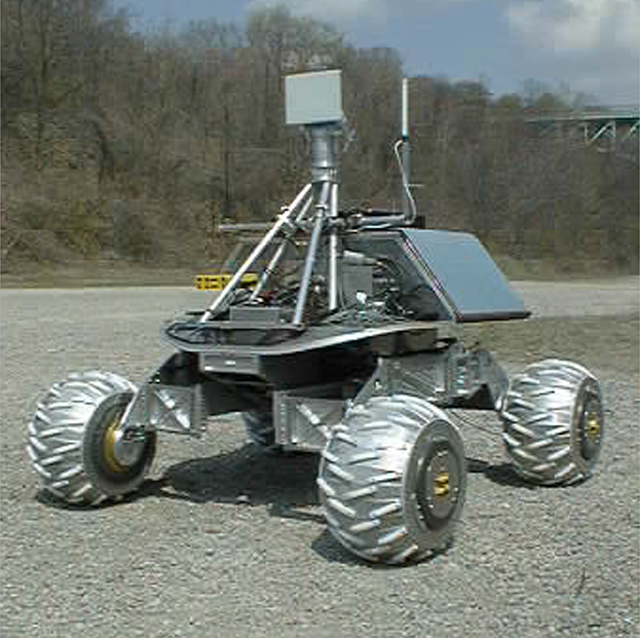Summary of the Project

When you think of space
exploration...
...you think of astronauts, big rockets, men
on the moon, and the space shuttle. Future space exploration will depend on
robots like Nomad, and work of telenauts here on Earth.
Telenaut:1.(n) a person who controls a space robot from earth; 2. today's
astronaut
Designing Nomad
The Nomad project started four years ago. Scientists from Carnegie Mellon
University in Pittsburgh formed a team to find better ways to design, build,
and communicate with robotic explorers so that they can survive long treks
under harsh conditions.
(the team was looking for ways to practice on earth what will eventually be
done in space)

Nomad Comes Alive
After two and a half years of research and design, scientists knew how the
robot needed to:
- move
- see and send images
- communicate with teleoperators
- navigate safely with on board sensors.
But, that was in a lab at CMU. NASA wanted to see the robot in action. They
funded a demonstration project to build a robot and test it in a desert. That
robot is Nomad.
Nomad in the Desert
The Atacama Desert in northern Chile was chosen because of its "out of this world" terrain. With no plants, the desert resembles the moon or Mars more than it resembles earth. Nomad is ready to begin it's 200 kilometer trek through this barren, beautiful land.
Signals are beaming back between Nomad, Pittsburgh's Carnegie
Science Center, and the researchers at California's NASA Ames complex.
Visitors to the Science Center have a chance to participate in the project
first hand by becoming a telenaut. Visitors to our web site can explore
our pages, experience pictures Nomad has taken in the desert, and
see what space missions will become in the 21st century.
Back to the Atacama Desert Trek Home Page
Last Modified on: Fri Jun 13, 1997


